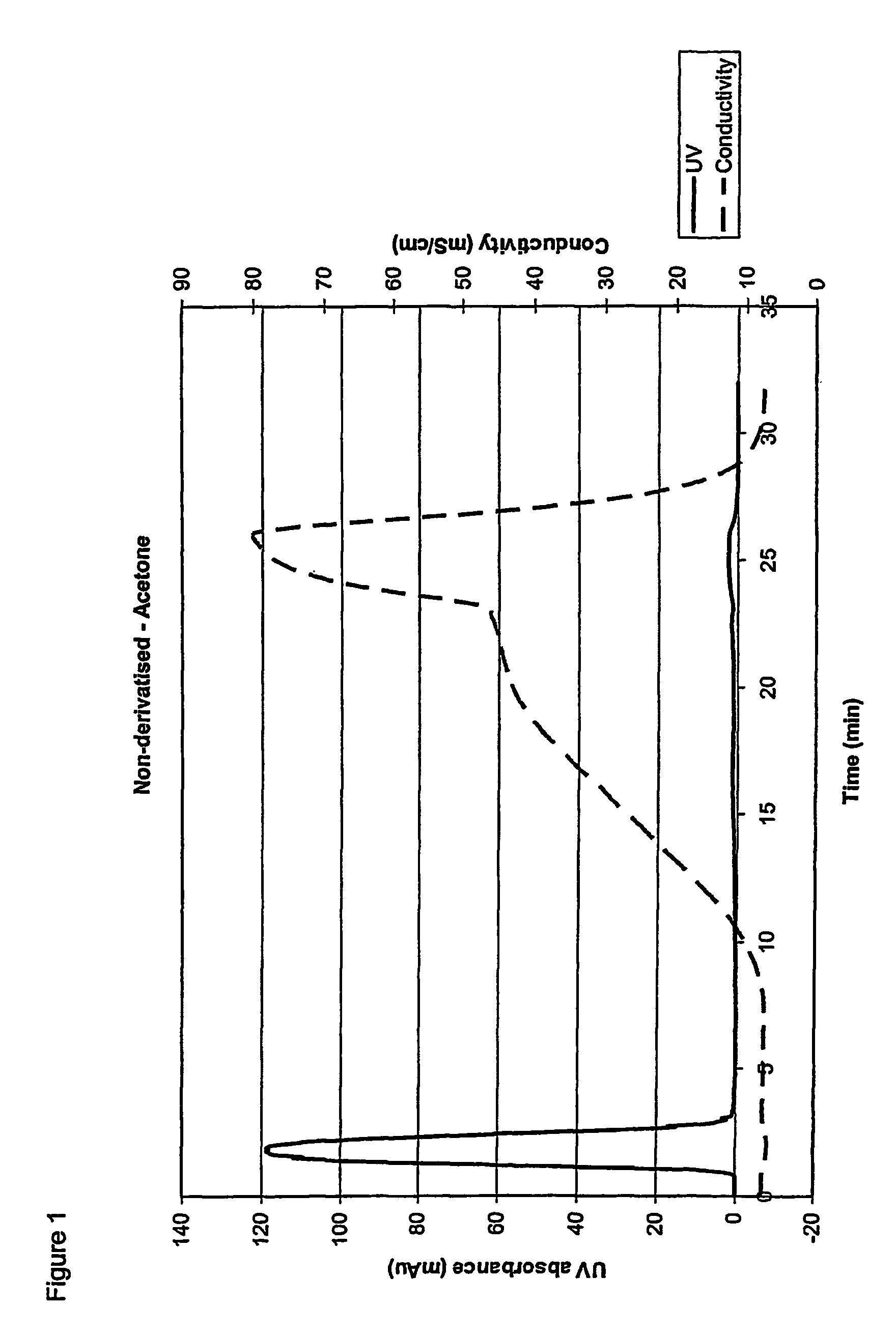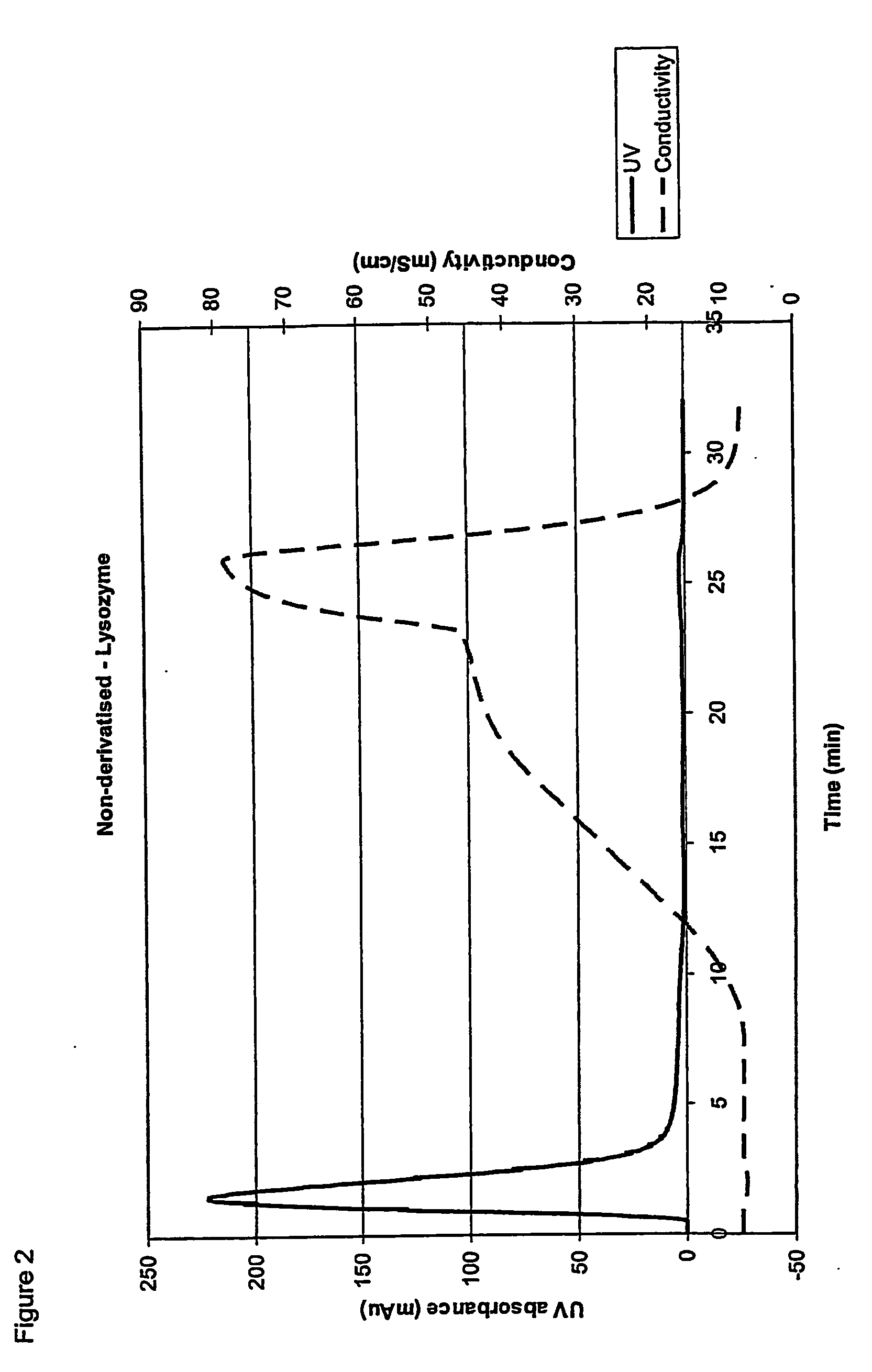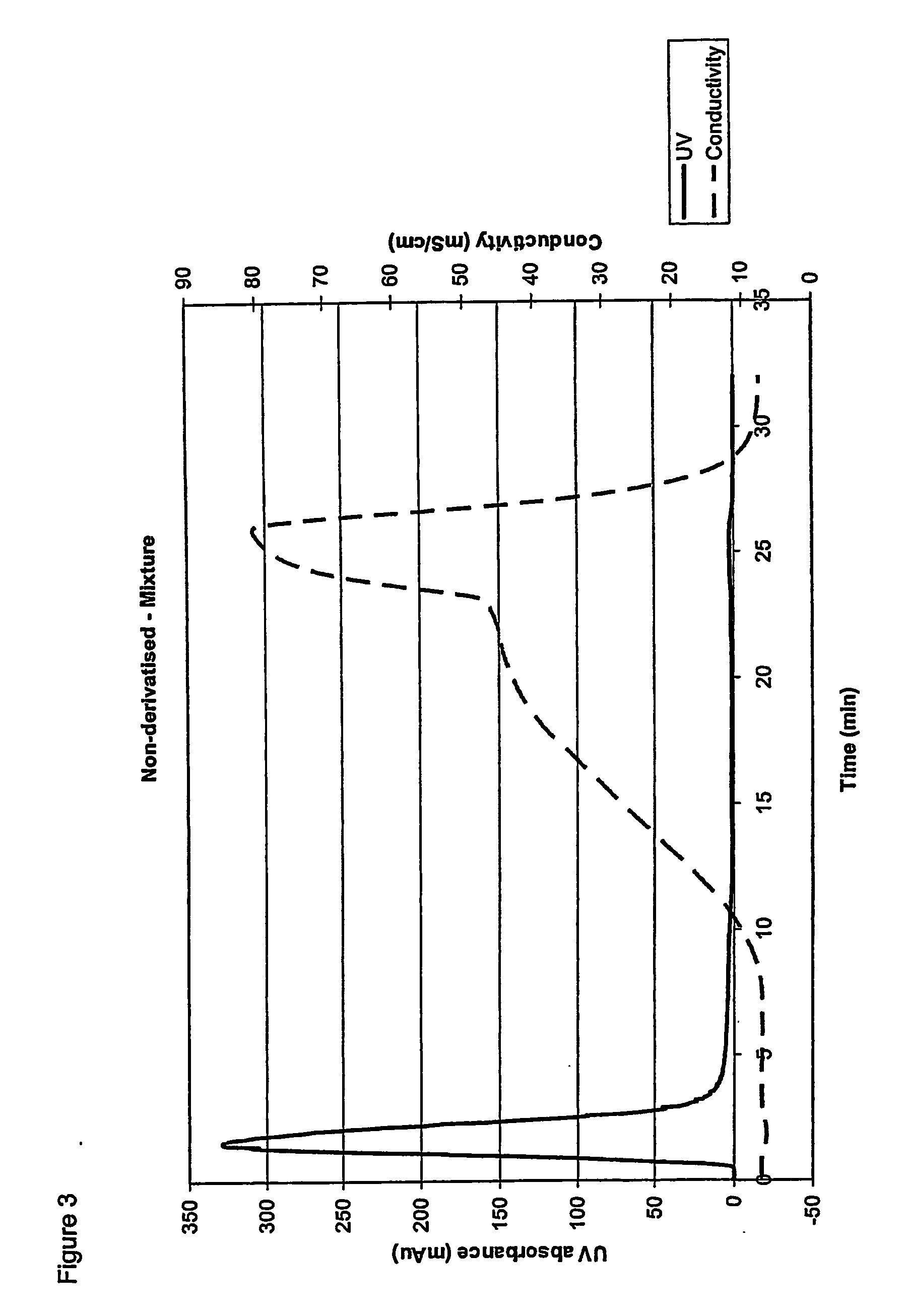Separation Methods
a technology of chromatographic separation and inulin, which is applied in the direction of separation process, cation exchanger material, peptide, etc., can solve the problem that the use of charged inulins as chromatographic separation aids has not been reported
- Summary
- Abstract
- Description
- Claims
- Application Information
AI Technical Summary
Benefits of technology
Problems solved by technology
Method used
Image
Examples
example 1
Method 1—Separation of a Strongly Hydrophobic Protein
[0074]A running buffer (mobile phase) is selected with a pH below the pI of the protein so that the protein carries a positive charge. Purification of the protein is achieved using a negatively charged sugar polymer carboxymethyl beta-cyclodextrin and a positively charged chromatography matrix (anion exchanger). Traditionally it would not be possible to retain a positively charged protein on a positively charged matrix. However, in this method, a solution of a negatively charged sugar polymer is injected through the column prior to introduction of the protein solution. The sugar polymer binds to the chromatography matrix, temporarily derivatising the surface. This derivatised surface is capable of hydrophobic interaction with protein molecules. The protein(s) to be separated are then injected through the column. An elution is performed. The elution method can be an isocratic elution (no salt gradient) in which retention time on th...
PUM
| Property | Measurement | Unit |
|---|---|---|
| Hydrophobicity | aaaaa | aaaaa |
| Amphipathicity | aaaaa | aaaaa |
Abstract
Description
Claims
Application Information
 Login to View More
Login to View More - R&D
- Intellectual Property
- Life Sciences
- Materials
- Tech Scout
- Unparalleled Data Quality
- Higher Quality Content
- 60% Fewer Hallucinations
Browse by: Latest US Patents, China's latest patents, Technical Efficacy Thesaurus, Application Domain, Technology Topic, Popular Technical Reports.
© 2025 PatSnap. All rights reserved.Legal|Privacy policy|Modern Slavery Act Transparency Statement|Sitemap|About US| Contact US: help@patsnap.com



